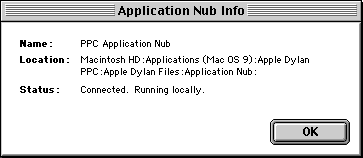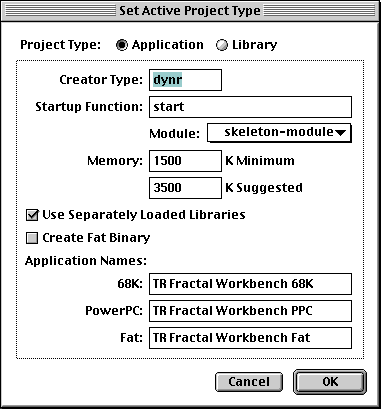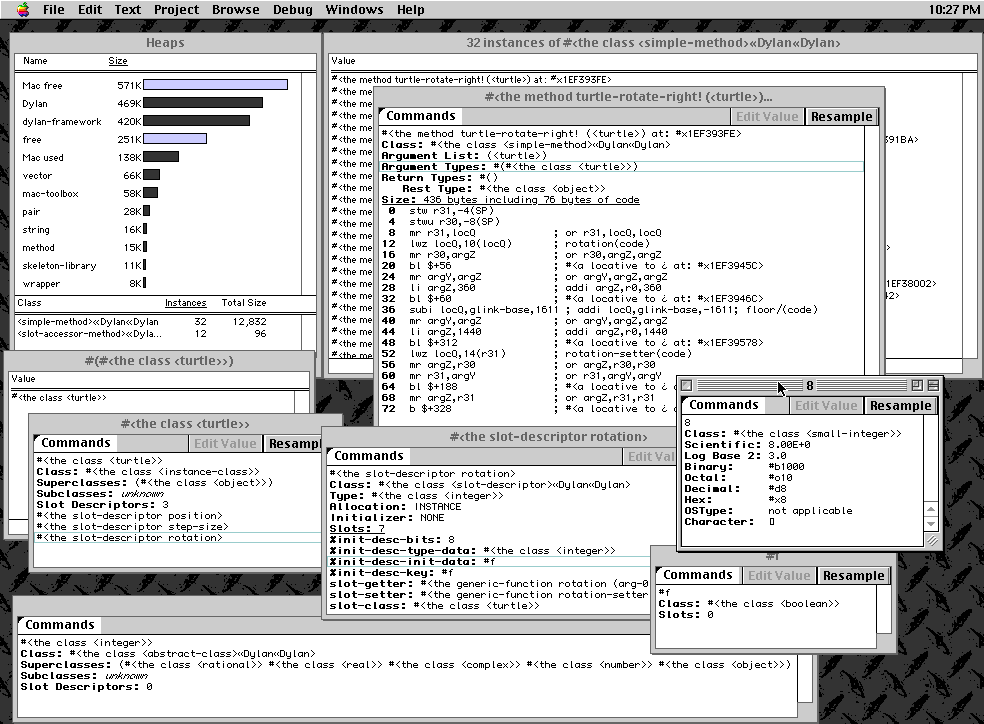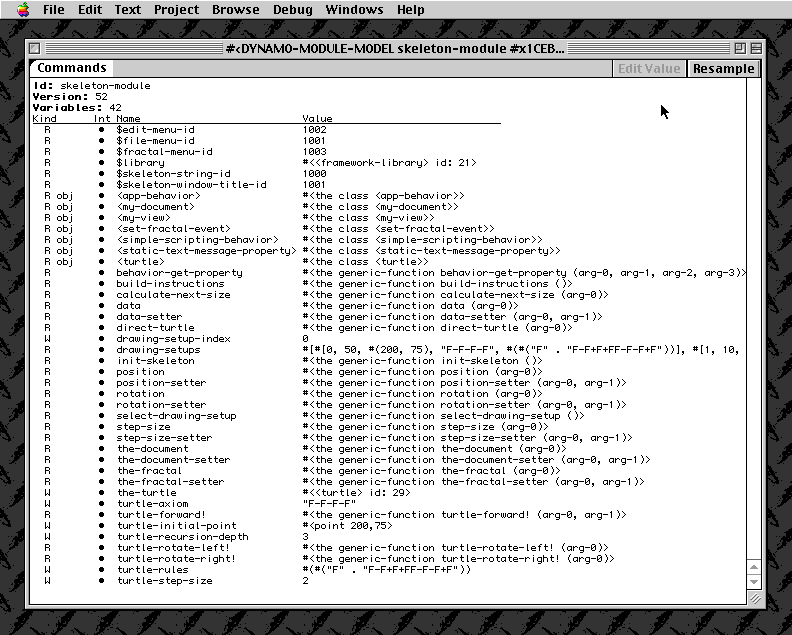Apple Dylan Screenshots - Dynamic¶
Paul R Potts writes:
Dynamic Programming¶
If you wanted to build and debug an application, your work would revolve around the application nub. This was a small application shell, complete with source code, that could be fleshed out with your objects and debugged interactively, even on another machine across a network. Your live objects would be downloaded to the application nub for debugging. It was even possible to stop the application nub’s event loop, stream out objects, replace methods and objects, changing the behavior of your code, and keep going, only rebuilding what you needed. All this is not only possible but common in a truly dynamic environment.

The application nub for debugging in Apple Dylan.¶
After PowerPC support was added, it was possible to build 68K, PowerPC, or “fat” binaries with no additional effort.

Different project types in Apple Dylan.¶
I’m not going to to into extreme detail about all the tools available to you for debugging an application, but let me quickly present a grab bag of these tools. A developer could
inspect the run-time heaps (top left)
see the compiled code associated with any function
recursively explore every detail of the representation down to the bit level

A grab bag of the debugging tooks available in Apple Dylan.¶
This next image shows inspection of heap objects within a module:

Inspection of heap objects within a module.¶
Next: Apple Dylan was a little bit strange in that it still showed its MCL (Macintosh Common Lisp) innards. Also, Apple had ambitions for a full-blown GUI-building tool, allowing you to lay out and tweak GUIs without even writing code. See Apple Dylan Screenshots - Misc.